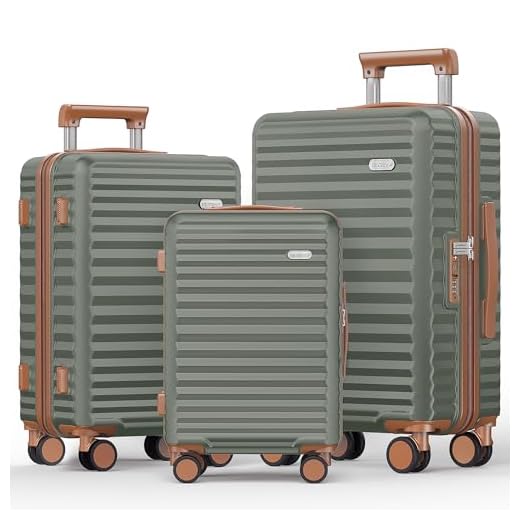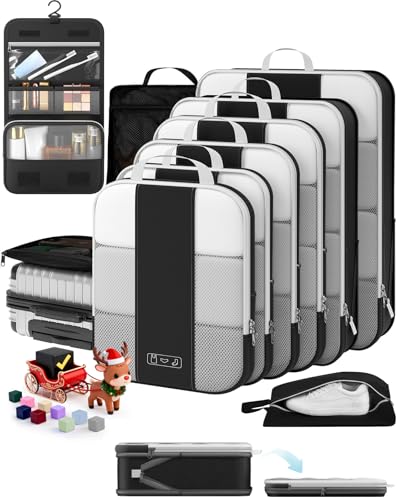



Using a systematic approach ensures streamlined handling of personal belongings during arrival and departure. Begin by segmenting items into categories: clothing, toiletries, and valuables. This method simplifies access and reduces time spent rummaging through bags at a later time.
When preparing for transportation, utilize high-quality luggage that features secure compartments. Opt for soft-sided bags for flexibility while hard-shell cases provide enhanced protection for fragile items. Always double-check for prohibited items, ensuring compliance with travel regulations.
Incorporating packing cubes maximizes space while keeping contents organized. Roll clothes instead of folding to minimize wrinkles and maximize efficiency. For toiletries, employ leak-proof containers and consider a separate pouch for quick access at security checkpoints.
Upon arrival, quickly sorting and placing items in their respective areas promotes a sense of order. First, empty essential belongings, such as electronics and medications. Follow this by unpacking clothing, ensuring that each piece has its designated spot, thus fostering a clean environment throughout the stay.
At departure, reverse the unpacking process, taking care to check for personal items left behind. Use a checklist to confirm that nothing is forgotten. By implementing these structured techniques, hassle-free management of personal belongings becomes a reality.
Choosing the Right Suitcase for Guests
Select lightweight materials like polycarbonate or nylon, ensuring durability without unnecessary weight. Consider hard-sided options for optimal protection against impacts, while soft-sided varieties offer flexibility and expandability for additional storage.
Look for four 360-degree spinner wheels for effortless maneuverability in crowded areas. A suitcase with a built-in telescoping handle allows for easy transport, catering to various heights and preferences.
Prioritize adequate internal organization, incorporating compartments or pockets to separate clothing, toiletries, and electronics. This ensures easy retrieval and keeps everything in order during travel.
Include a built-in TSA-approved lock for added security, providing peace of mind while on the move. Opt for designs with identifiable colors or patterns to simplify locating items on luggage carousels.
Warranty or guarantee options are beneficial; choose brands with solid customer support for future concerns. Evaluate size restrictions for airline travel to avoid unexpected fees, selecting either carry-on or checked options based on trip length.
Organizing Items for Easy Access
Prioritize quick retrieval by arranging belongings in an intuitive manner. Use smaller compartments or packing cubes to categorize items by purpose or type.
Suggestions for Arranging Contents
- Top Layer: Place frequently used items such as toiletries, chargers, and essential clothing on top for immediate access.
- Clothing Roll-Up: Roll clothes instead of folding to save space and minimize wrinkles, making it easier to find specific garments.
- Categorization: Keep all similar items together, such as all shoes in one section or tech gadgets in a designated pocket.
Utilizing Packing Aids
- Packing Cubes: Employ cubes for different categories, like a cube for gym wear and another for evening outfits, ensuring clarity and organization.
- Labeling: Consider labeling compartments or bags to facilitate easy identification without rummaging through everything.
Arranging belongings systematically enhances accessibility and ensures a seamless experience for those unpacking. Adopting these strategies leads to a more enjoyable stay.
Handling Delicate and Valuable Items
Wrap fragile possessions in bubble wrap or soft cloth, ensuring multiple layers for adequate protection. Place these items in the center of the suitcase to minimize the risk of impact from other belongings. Consider using a hard-shell case for added durability, particularly for electronics or glassware.
Use Protective Cases
Invest in padded or shock-resistant cases specifically designed for electronics, jewelry, or fragile items. These protectors absorb shocks and safeguard against scratches. For jewelry, individual pouches or a jewelry roll can prevent tangling and damage during transit.
Label Explicitly
Clearly label all delicate items. Use fragile stickers and appropriate warnings to alert handlers of the contents. This practice encourages careful handling during transport and can significantly reduce the likelihood of breakage.
Secure loose valuable items with zip ties or packing cubes. This prevents movement that may lead to scratches or damage. Always consider keeping essential items, like medications or irreplaceable documents, in a carry-on for immediate access and additional protection.
Minimizing Wrinkles and Damage During Packing
Utilize packing cubes for a structured approach. These compartments help to minimize movement within the suitcase, significantly reducing the risk of creasing on garments.
Employ tissue paper or dry cleaner bags between clothing items. This method creates a buffer that helps prevent friction and consequently diminishes wrinkles.
Roll clothes instead of folding. This technique not only saves space but also decreases the chance of creasing.
Place heavier items at the bottom while lighter pieces should go on top. This arrangement minimizes pressure on delicate fabrics, reducing the likelihood of damage.
Ensure zippers and buckles are secured to prevent snagging. Use rubber bands or packing straps to keep everything in place.
Cushion fragile items with clothing. Wrap delicate objects in soft materials to absorb shock during transit.
For shoes, stuff them with socks or tissue paper to maintain their shape and prevent crushing other contents.
Seal liquids in zip-lock bags to avoid spills that could damage clothing. Additionally, be cautious with perfumes and other fragrances that may stain fabrics.
Consider climate conditions at the destination. If traveling to a humid area, opt for moisture-wicking materials to reduce heaviness from condensation.
Strategies for Unpacking Efficiently
Begin with a designated space for the items upon arrival. A nearby surface ensures there’s no clutter, making it simpler to sort through belongings swiftly.
Sort by Category
Separate garments, toiletries, and accessories. Placing similar items together speeds up retrieval and organization. For instance, stash all hygiene supplies in one area, while clothes can be hung or folded neatly in closets or drawers.
Utilize Storage Solutions
Employ baskets or bins to corral smaller items. This tactic minimizes mess and provides a visual cue for quickly locating essentials like chargers or jewelry. Consider utilizing a best luggage rack for street glide to keep bags off the floor, promoting a tidy environment.
For optimal organization, use packing cubes. This keeps everything in its place and provides accessibility without unpacking entire bags.
When dealing with valuables or fragile items, place them in a secure spot immediately. Invest in a best luggage shoulder strap for easy transport and protection of significant personal belongings.
By establishing a systematic approach, unpacking transforms into a straightforward process, allowing more time for relaxation and enjoyment upon arrival at a destination.
Providing Helpful Tips for Guests
Utilize compression bags to maximize space within bags. These bags can significantly reduce volume by removing excess air, allowing for more efficient use of packing space.
Label outdoor gear and sports equipment with tags indicating contents. This simple step helps in identifying items quickly upon arrival, especially in shared accommodations.
Consider packing a reusable shopping bag. They are convenient for transporting items outside or for additional storage once essentials have been unpacked.
When traveling internationally, carry a travel adapter for electronic devices. This can prevent inconvenience caused by incompatible plug types.
For those traveling with family, coordinate clothing color schemes to mix and match outfits, reducing the total amount packed while increasing wardrobe versatility.
| Category | Tip |
|---|---|
| Clothing | Use packing cubes to compartmentalize outfits and accessories. |
| Footwear | Utilize shoe bags to keep them separate from clothing and prevent stains. |
| Toiletries | Opt for travel-sized containers, or refillable travel bottles to carry only necessary amounts. |
| Documents | Keep important papers like passports and itineraries in a designated travel wallet for easy access. |
Consider personalizing your space upon arrival. Bringing small decorations or familiar items can help make temporary accommodations feel more home-like.
For special experiences, look for local recommendations. For example, check out the best aquarium in oahu for a unique visit during your stay.







